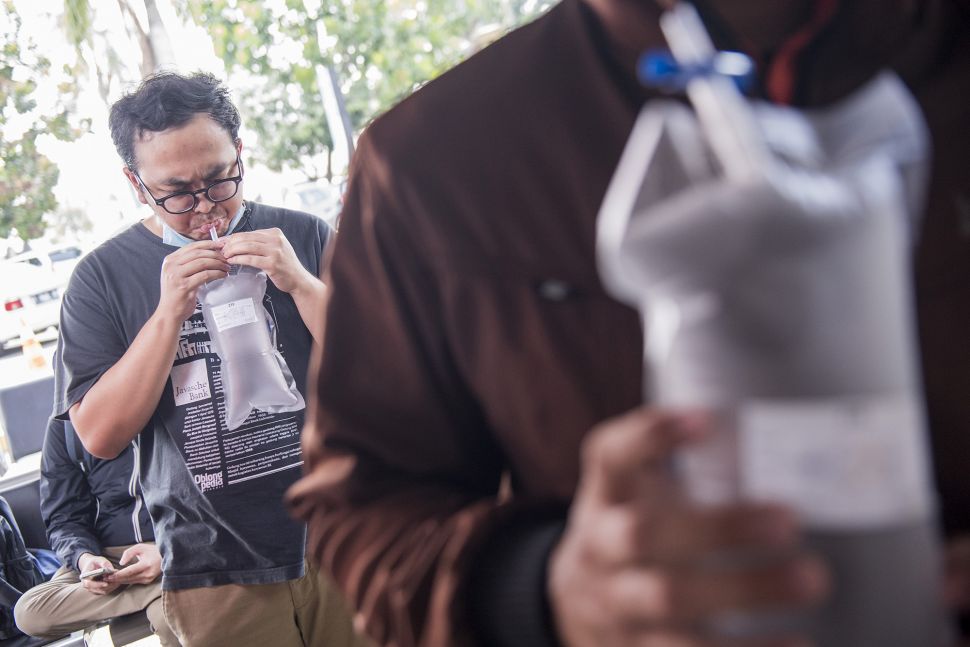Tulisan saya di The Jakarta Post tentang Jakarta Sehat. Semoga bermanfaat.
Revisiting the ‘Jakarta Sehat’ scheme
Creating a healthier Jakarta through the Kartu Jakarta Sehat (Jakarta Health Card) program has run beyond the card, which focused more on coverage at the beginning. Jakarta Governor Basuki “Ahok” Tjahaja Purnama and the provincial health agency have upgraded 20 community health centers (Puskesmas) to subdistrict public hospitals and launched a grassroots-based program called “knock on the door with heart”.
The efforts look impressive, but beg the question as to whether they will lead to a fundamental, systematic change in the provision of health services for Jakarta citizens.Indeed, Jakarta is a unique prototype — and its health system in an urban setting may differ from other areas. Jakarta has no shortage of health workers — with 11,178 doctors, 10,164 nurses and 1,683 midwives. Jakarta requires more than bringing specialist-based services to the subdistrict level as a shortcut that could lead to an unstructured referral system.
The major step is strengthening primary care services. It should shift health-care toward long-term person-focused care (not disease-focused), comprehensive care and coordinated care. Primary care services should manage the population carefully, i.e. recognizing not only patients’ bodies, but their mental health; treating them as people; giving care in the long-term; and helping them with seeking care elsewhere if needed.
The governor offered an exciting initial concept of “private physicians”. However, follow-up measures have to be taken. The government should adjust the primary care system by transforming clinics at the primary level into “primary, family clinics” where families stand as the focus of services.
There is no precise definition of a “primary clinic”. However, it would solve the current, drawn-out stagnation in health practices. There are at least two major points of change. First, the emphasis on family units should balance the proportion of total coverage with a reasonable ratio.
The current ratio of doctors to people in Jakarta — at 1:1,000 — is much better than the WHO recommendation of 1:2,500. This idea would be a breakthrough to address the shortage of Puskesmas that should cover up to 40,000 people. Currently, even with an estimated two visits per person, it would be 80,000 visits per year.
For example, if there are four doctors at a Puskesmas, they have to treat 20,000 people in a year, or 384 people per week. It also means they have to meet 11 patients per hour and patients have less than six minutes for their consultation. What quality of care do we expect?
With the overload coverage, Puskesmas cannot undertake promotion and prevention programs either. The “knock on the door with heart” program may run to a very limited extent — no precise assessments, follow-up projects, or changes in grassroots programs.
It is obvious that we should reset capitation coverage to the ideal ratio, 1:2,500 to 1:5,000. By this estimation, Jakarta requires 14-351 doctors per subdistrict — and it is very likely to conform. Assuming three doctors practice at each clinic, there would be five-100 primary family clinics per subdistrict. Some subdistricts may be covered only by Puskesmas, but more subdistricts require additional clinics from private providers.
Restrictions on coverage per clinic will inevitably reduce capitation funds obtained — and a much less than decent gain for medical staff. The government must align the policy by providing incentives beyond the capitation funds for those working in the primary family clinics, including those practicing with private health-care providers. Additional funding to bolster the current Rp 8,000 (60 US cents) to Rp 10,000 per capita may not be feasible.
However, instead of giving a salary of Rp 10-13 million to a general practitioner at a Puskesmas, this re-organization of the primary care system with appropriate additional incentives would encourage private providers to support the Jakarta Sehat scheme. For example, the government could give a basic incentive of Rp 10-15 million to every provider that wants to join, then provide performance-based incentives for those that perform well. The provincial health agency, then, should arrange a credible performance appraisal system.
Another important approach is delivering team-based services consisting of doctors, nurses and midwives, which would improve the quality of health services. It would address the absence of an integrated and continuous service that currently exists in primary care. So, the teams would provide services with clear responsibilities, including ensuring people can access services any time, as needed.
The current practices in Puskesmas, which serve people only during work hours, are unfavorable for those who work. Changing the practices of health behavior is another concern to address.
This change would restore the function of primary care as “public” health-care providers. Puskesmas, given their original function, should diminish curative measures and shift to more health promotion and prevention measures for the public interest.
This reorganization, even reengineering, of the health system requires changes in mindset and behavior in delivering services, as well as strong capacity building for health workers.
Accordingly, support from academic institutions, e.g. medical schools and health faculties or academies, is critical.
Networking within the academic health system would be the best alternative. However, it is a sensitive measure. A highly designed structure and notable roles, responsibilities and authority are prerequisites for running the system properly.
Revisiting the Jakarta Sehat program may sound revolutionary or cliché. The obstacles are formidable. Learning from what the Jakarta governor has done, reconstructing the health system in Jakarta is nothing complicated, but necessary.
________________
The writer is a lecturer at the University of Indonesia’s School of Medicine, with focuses on health economics and policy issues. He is also a member of Hemisphere, a health research and policy analysis group.
– See more at: http://www.thejakartapost.com/news/2016/03/05/revisiting-jakarta-sehat-scheme.html#sthash.2ht89Cr5.dpuf











